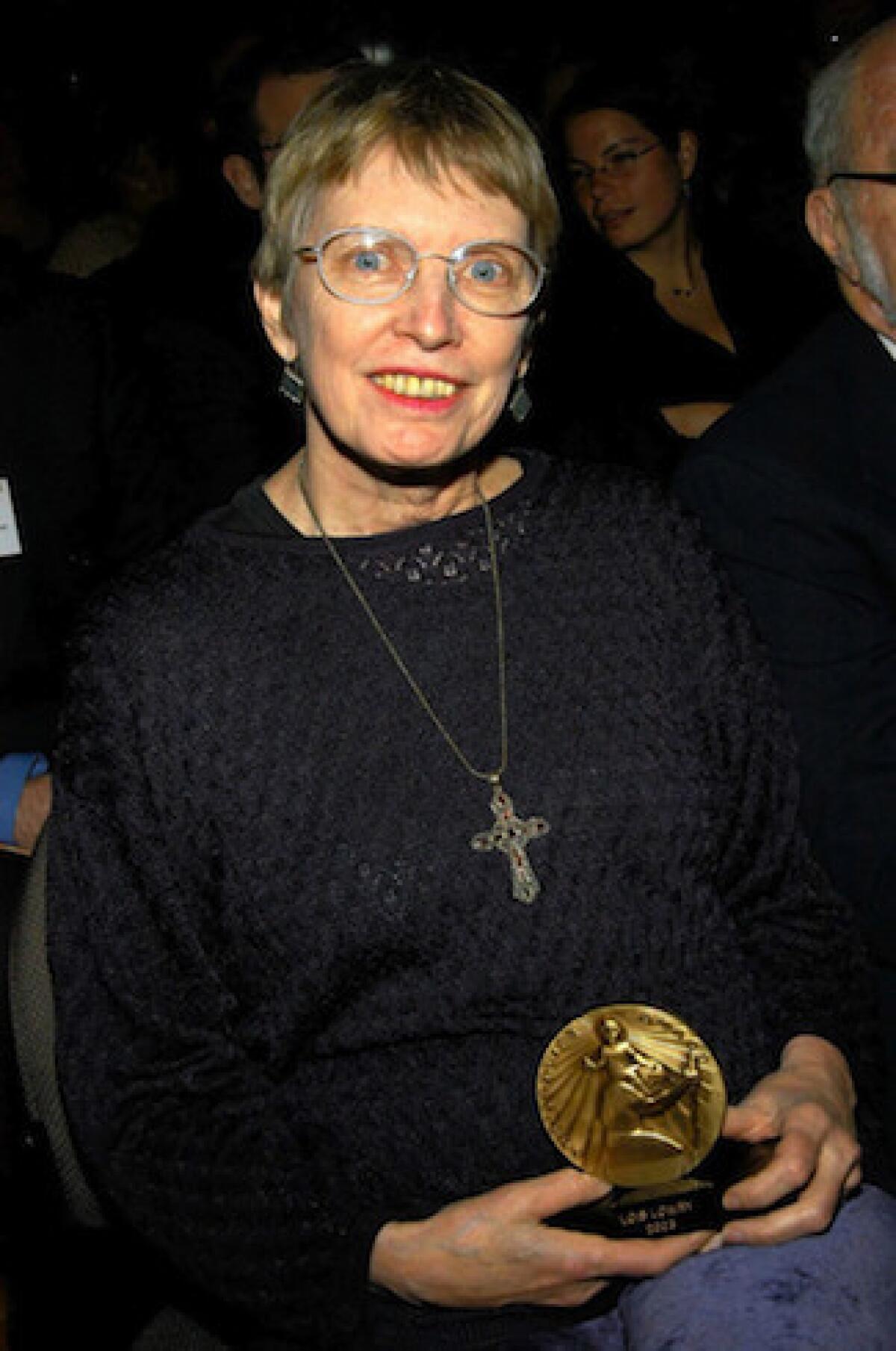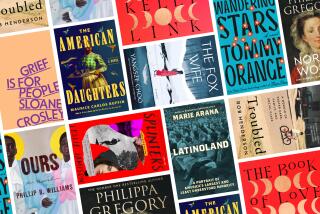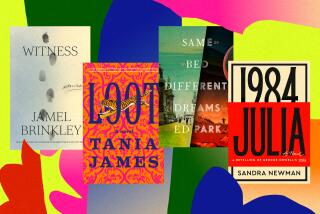Author Lois Lowry connects the pieces

- Share via
In 1993, Lois Lowry published “The Giver,” a young adult novel about a dystopian culture in which conformity is the standard and Sameness is a social goal. By then, Lowry was already a well-known writer for young readers: Her first book, “A Summer to Die,” came out in 1977, and her novel “Number the Stars,” which takes place during the Holocaust, won a 1990 Newbery Medal. Still, with its cautionary sensibility, its insistence on thinking for oneself, “The Giver” became a literary lightning rod. Winner of a 1994 Newbery, the novel has been equally assigned and challenged and is the defining book of Lowry’s career.
Seven years after “The Giver,” Lowry put out a companion volume, “Gathering Blue,” and then in 2004, “Messenger,” a third installment in what she came to call “ ‘The Giver’ trilogy.” Yet next month, she returns to the saga one more time with “Son,” which picks up threads from all three previous books and weaves them into a narrative of its own.
Is this the end of the story? Reached by phone at her home in Maine, Lowry says it is. “Part of my answer,” she jokes, “is that I’m 75 years old. But I see this as a completed set of books.”
Did you think of “The Giver” as the first book in a series when you started?
No, I didn’t. It’s interesting that so many books now are published as the first in a series. It never occurred to me. Although “The Giver” does have an ambiguous ending. I’ve heard about that from readers over the years.
Did that ambiguity make you want to stay with the story? To clear it up?
It’s not that cut and dried. It’s more subliminal. When you sit every day and read 40, 50, 60 emails, and 25% of them indicate the same thing … well, I listened. “Gathering Blue” was a separate book. I wanted to explore what a society might become after a catastrophic world event. Only at the end did I realize I could make it connect to “The Giver.” The third book, from the start it was connected to the other two. Really, I thought that was the end of it. “Trilogy” had a nice sound, and I could see it as a little boxed set.
You’ve written many different kinds of books in many different settings. “Number the Stars” is historical, for instance.
For me, it’s boring to do the same book over and over again. Perhaps that’s why it took me so long to finish this series, why I didn’t write these four books in a row. I’ve kept myself from being bored by trying to do something new.
Your novels have been noted for their messages.
I don’t set out to transmit a message. I don’t write with a political point of view. There are no religious overtones. Looking back at my books, I can say, “Oh, yes, it is there.” But it’s not in my mind when I write.
What comes to me always is a character, a scene, a moment. That’s going to be the beginning. Then, as I write, I begin to perceive an ending. I begin to see a destination, although sometimes that changes. And then, of course, there’s the whole middle section looming.
What’s next for you?
I’m finishing a book in my series for younger readers, “Gooney Bird.” But I’ve already had something else come to me. I’ve started writing. I think I have the feeling of it.
More to Read
The biggest entertainment stories
Get our big stories about Hollywood, film, television, music, arts, culture and more right in your inbox as soon as they publish.
You may occasionally receive promotional content from the Los Angeles Times.











